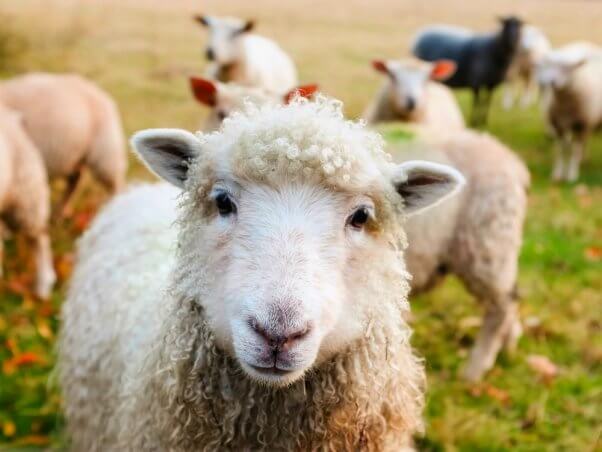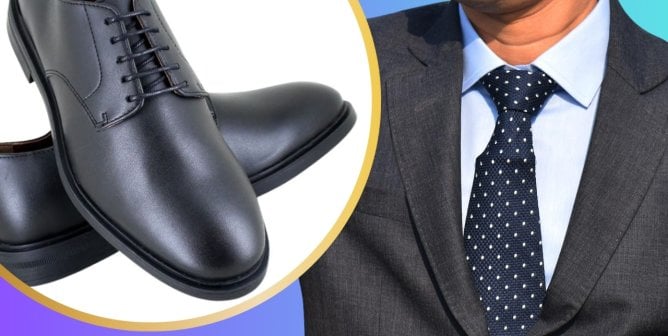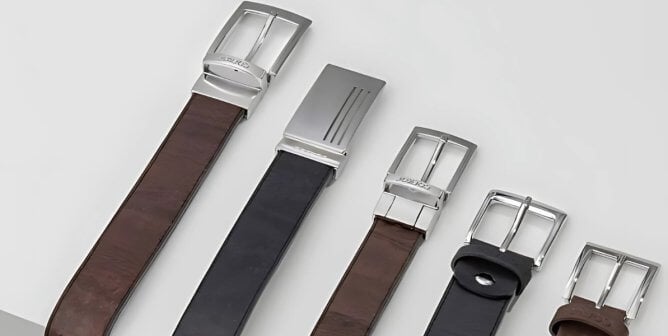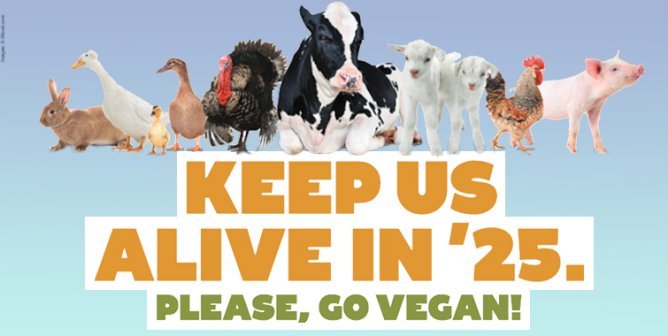Many people mistakenly imagine that shearing a sheep is a peaceful process, much like getting a haircut. Others think that wool is a sustainable fabric—which it’s not. If you believe such things, we can guarantee that the wool has been pulled over your eyes (pun intended), so we’ve set out to debunk some common myths about wool.

Once you’ve learned the truth, we think that you’ll want to clear your conscience (and closet) of this cruelly obtained material! Please consider the following points:
1. Sheep don’t need to be sheared.
Wild sheep shed most of their wool every year and don’t need to be sheared. Domesticated sheep, on the other hand, are bred to have folds in their skin in order to create more surface area for wool to grow. Flies, attracted to the moisture in these folds, lay eggs there, and the hatched maggots then begin to eat the sheep alive. This is called “flystrike,” and to prevent it, many Australian ranchers perform a barbaric procedure, known as “mulesing,” on lambs, in which they cut huge strips of flesh off the backs of the animals’ legs and around their tails. One magazine put it best when it said that Merino sheep don’t “even qualify as a freak of nature because Mother Nature would never make such an animal.”
2. It’s not just a haircut.
The shearing shed is notoriously violent. Says one eyewitness: “[T]he shearing shed must be one of the worst places in the world for cruelty to animals … I have seen shearers punch sheep with their shears or their fists until the sheep’s nose bled. I have seen sheep with half their faces shorn off …”
3. Animals die in the process.
In addition to all the horrors mentioned so far, when you purchase a wool or shearling garment, you could be directly contributing to the meat industry. Sheep are bred for either meat or wool—and often both, in which case they’re deemed “dual-purpose” animals. Lambs are extremely susceptible to weather fluctuations. During one spring season in Wales, nearly 40 percent of newborn lambs died from a drought and the cold weather.
4. Wool doesn’t wick moisture.
Have you ever noticed a smelly wood sweater? We thought so. That’s because wool is a hygroscopic material, meaning that it easily absorbs moisture from the air. Mildew needs moisture in order to thrive and will grow on wool clothing in humid climates, creating a foul odor.
5. Wool isn’t sustainable.
Think wool is eco-friendly? Think again. One sheep emits about 20 to 30 liters of methane per day, contributing significantly to New Zealand’s greenhouse-gas emissions, over half of which come from livestock. Other ecological concerns include pesticide use to manage fleas, lice, and other insects as well as land clearing and over-grazing. The amount of water to produce wool is staggering: It takes 22,400 gallons to produce just 1 pound of wool.
Wool may not be all that you thought it was—but not to worry! Many outstanding vegan fabrics are available these days to keep you cozy.
Want more compassionate content? Sign up for PETA Living News to have tips, vegan recipes, and news sent to your inbox once a week.
All fields in bold are mandatory.
By submitting this form, you’re acknowledging that you have read and agree to our privacy policy and agree to receive e-mails from us.
Text VEG to 73822 to get the latest vegan lifestyle tips, recipes, and urgent action alerts texted right to your phone.
Terms for automated texts/calls from PETA: https://peta.vg/txt. Text STOP to end, HELP for more info. Msg/data rates may apply. U.S. only.







